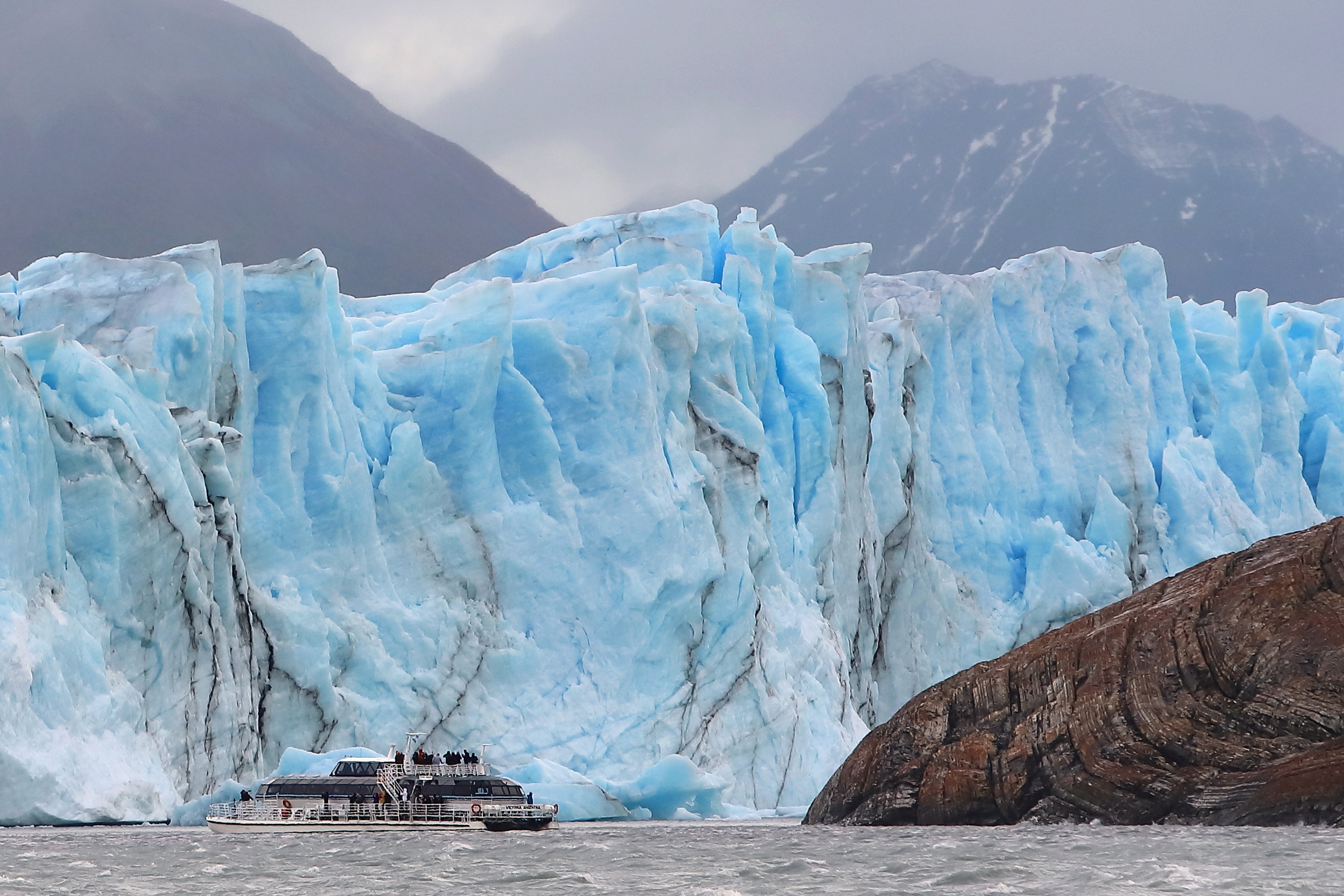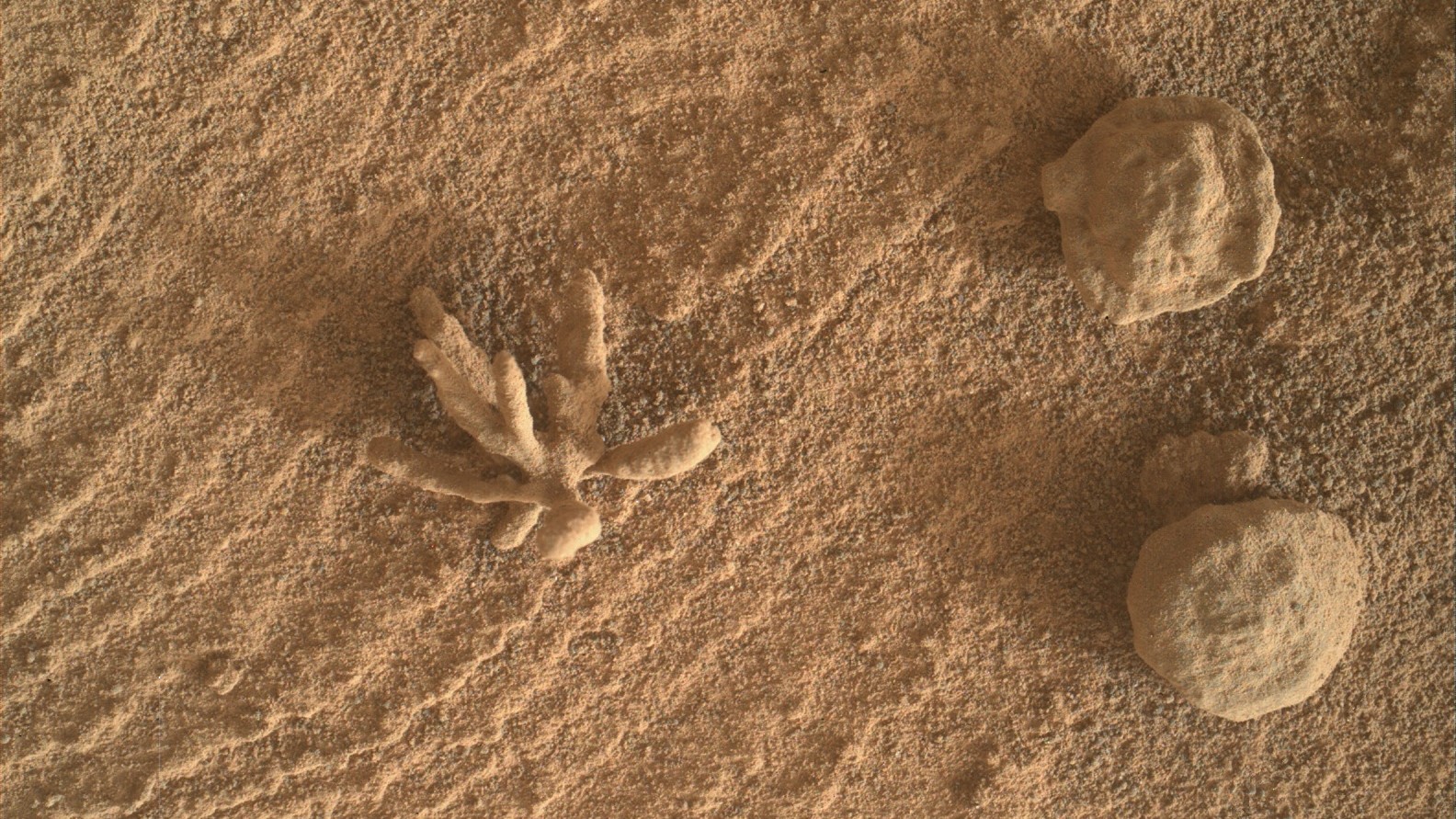
(Image credit: Photo courtesy of the Calvert Marine Museum)
In a first for paleontology, scientists have found hundreds of tiny, fossilized fecal pellets crammed inside a fish braincase dating to about 9 million years ago. The wee fossil poops, also known as coprolites, were deposited by scavengers — probably worms — that devoured the fish’s decaying head, including its brain.
As they munched the flesh from the skull, the worms pooped out chains and clusters of oval coprolite beads, each measuring about 0.1 inches (2.5 millimeters) long. Small as they were, those pellets added up over time. When the hungry scavengers were done, they had left behind hundreds of pellets — enough poop to fill the fish’s braincase entirely.
Researchers found the coprolite-filled fossil at Calvert Cliffs, a site in southern Maryland that contains fossils dating from about 18 million to 8 million years ago, during the Miocene epoch. The skull belonged to the fish Astroscopus countermani, a type of bottom-dwelling ambush predator commonly known as a stargazer, and small, oblong coprolite pellets such as these are known collectively as Coprulus oblongus. In addition to the fecal-stuffed skull, the scientists also examined other coprolite pellet deposits that were clustered in sandy sediments, stuck to fossilized snail and bivalve shells, and grouped around preserved barnacles at the site.
Related: 8 bizarre animal surprises from ‘true or poo’ — can you tell fact from myth?
Another notable fossil in the group was a much larger coprolite measuring 7 inches (18 centimeters) long, that had been pooped by a vertebrate, possibly an ancient crocodilian. Threading through the preserved poop were deep tunnels that had been dug out by unknown animals eating the poop or digging a home — or both, researchers reported in the March 2022 issue of the journal Rivista Italiana di Paleontologia e Stratigrafia (Research in Paleontology and Stratigraphy).
Many Miocene marine creatures have previously been described from Calvert Cliffs fossils, including sharks and other fish, turtles, crocodiles, seabirds and seals, according to the study. A variety of coprolites have also been collected near the cliffs, though microcoprolites that are produced by invertebrates — such as the coprolites in the fish skull — haven’t been as well-studied as poop from animals with backbones, according to the study.

Scientists determined that the tiny beads inside the skull were fecal pellets “on the basis of their very characteristic size, shape and chemical composition,” said lead study author Stephen Godfrey, a curator of paleontology at the Calvert Marine Museum in Solomons, Maryland. Nondestructive X-ray spectroscopy revealed that these microcoprolites had relatively high concentrations of calcium and phosphate, which are commonly found in fossilized feces, Godfrey told Live Science in an email. (While there’s no way to tell for sure if the scavengers munched on fish brains, the poop-filled braincase suggests that brains were probably on the dinner menu.)
But whose poo was it? A dead animal’s corpse attracts numerous scavengers, many of which “will be perfectly happy to eat your brains and fill your skull with feces,” Godfrey said. Micropellets such as these are produced by insects, worms, sea squirts, snails and clams; but since the coprolites came from a marine environment, “we can safely rule out terrestrial insects as the producers,” Godfrey said. Sea squirts could also be ruled out, because they spend most of their adult lives attached to rocks, and acorn worms were also crossed off the list due to their habit of defecating outside their burrows.

Because the fecal pellets were found in the innermost parts of a fish skull that measured no more than 2 inches (5 cm) wide, they were probably pooped out by an invertebrate that could squeeze its soft body into tight spaces. “This would probably then rule out snails and clams, leaving polychaete worms and other kinds of worms as the most likely candidates,” Godfrey said in the email.
The researchers also noticed that all the wee pellets were similar in their size and shape, Godfrey said. In fact, he was “most surprised and actually impressed” by the coprolites’ uniformity, compared to the inconsistently shaped fecal output of most vertebrates.
“How and why is it that some worm could produce such uniform and wonderfully-shaped feces is remarkable to me,” he said.
Originally published on Live Science.

Mindy Weisberger is a Live Science senior writer covering a general beat that includes climate change, paleontology, weird animal behavior, and space. Mindy holds an M.F.A. in Film from Columbia University; prior to Live Science she produced, wrote and directed media for the American Museum of Natural History in New York City. Her videos about dinosaurs, astrophysics, biodiversity and evolution appear in museums and science centers worldwide, earning awards such as the CINE Golden Eagle and the Communicator Award of Excellence. Her writing has also appeared in Scientific American, The Washington Post and How It Works Magazine.
Note: This article have been indexed to our site. We do not claim legitimacy, ownership or copyright of any of the content above. To see the article at original source Click Here













